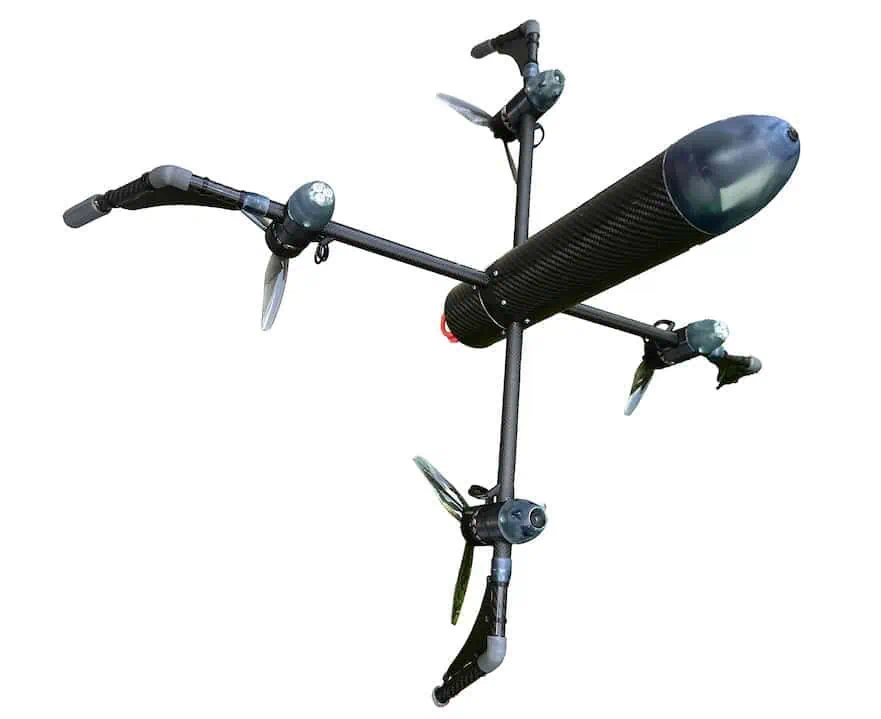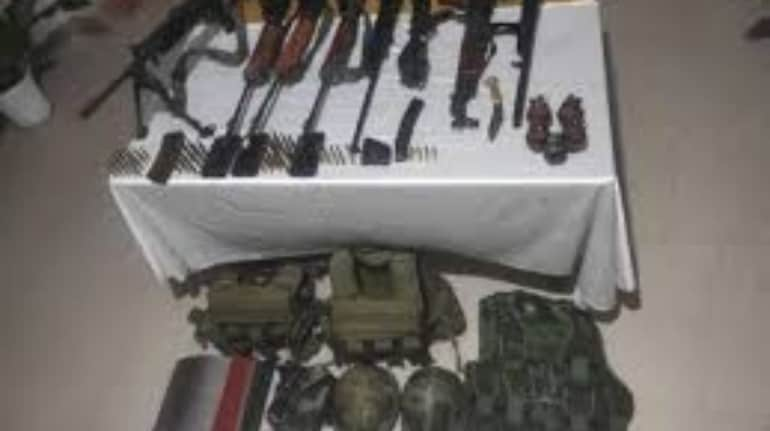SOURCE: IDRW.ORG

The Indian Army is intensifying its focus on cutting-edge drone technologies to bolster national security, particularly along its volatile borders with Pakistan and China. With the growing threat of unmanned aerial systems, the Army is seeking advanced Software-Defined Radios (SDRs) and GPS-independent navigation systems, alongside drones capable of operating in electronically jammed environments. These advancements aim to enhance India’s ability to detect, counter, and neutralize enemy drones while ensuring operational resilience in contested airspace.
The Indian Army has prioritized the development of SDRs tailored to detect and counter enemy drones. These versatile systems can be rapidly reconfigured to identify and neutralize a wide range of drone signals and emerging threats. By leveraging SDRs, the Army aims to create a dynamic defense mechanism capable of adapting to evolving drone technologies.
Continue readingSOURCE: IDRW.ORG
)
As geopolitical tensions escalate and European NATO member states seek to enhance their military self-reliance, several countries are exploring the procurement of Indian-made arms and ammunition. From artillery shells and small-caliber rounds to advanced systems like the Pinaka Multi-Barrel Rocket Launcher (MBRL) and Long-Range Land Attack Cruise Missile (LR-LACM), India’s defense offerings are gaining traction for their NATO compatibility, cost-effectiveness, and alignment with Europe’s strategic goal of reducing dependence on U.S. suppliers while strengthening their own military capabilities. This shift, underscored by recent developments such as France’s evaluation of the Pinaka system, signals a growing partnership between European NATO nations and India’s burgeoning defense industry.
India’s defense sector, bolstered by the “Make in India” initiative, has made significant strides in producing NATO-compatible munitions and systems, aligning with the alliance’s interoperability standards. Indian-made 155mm artillery shells, 5.56mm and 7.62mm small-caliber ammunition, and 120mm tank rounds adhere to NATO’s 120×570mm specifications, ensuring seamless integration with systems like the Leopard 2 and M1 Abrams tanks used by NATO members. This compatibility is a key factor driving interest from European nations, which are grappling with ammunition shortages and seeking reliable alternatives to U.S. and domestic suppliers.
Continue readingSOURCE: AFI
V8H0.jpg)
Turkish media outlets have erupted in alarm over unconfirmed reports that India has “unofficially offered” its Long-Range Land Attack Cruise Missile (LR-LACM) to Greece, a NATO ally and Turkey’s longstanding regional rival. The reports, originating from Greek defense platforms and amplified by Turkish news outlets like TR Haber, have sparked intense speculation and unease in Ankara, framing the potential deal as a strategic move by India to counter Turkey’s support for Pakistan during the May 2025 India-Pakistan conflict, Operation Sindoor. With the LR-LACM’s 1,000–1,500 km range and precision strike capabilities, Turkish media fear it could tilt the balance of power in the Aegean, threatening key military assets and escalating tensions in an already volatile region.
Developed by India’s Defence Research and Development Organisation (DRDO), the LR-LACM is a subsonic cruise missile designed for precision deep-strike missions against high-value targets, such as airbases, radar installations, and command centers. First tested successfully on November 12, 2024, at the Integrated Test Range in Chandipur, Odisha, the missile boasts a range of 1,500 km from land-based platforms and 1,000 km from naval platforms, powered by the indigenous Manik Small Turbofan Engine (STFE).
Continue readingSOURCE: AFI

Operation Sindoor, India’s four-day aerial campaign against Pakistan in May 2025, has been hailed as a masterclass in modern aerial warfare, particularly for its sophisticated use of electronic deception. Ryan Bodenheimer, a former U.S. Air Force F-15E Strike Eagle and F-16 Thunderbird pilot, described the Indian Air Force’s (IAF) tactics as “the best spoofing and deception we’ve ever seen,” crediting the Rafale’s X-Guard AI-enhanced jamming decoy system for outsmarting Pakistan’s air defenses.
Deployed during Operation Sindoor, the X-Guard system, developed by Rafale Advanced Defense Systems, likely played a pivotal role in neutralizing Pakistan’s Chinese-supplied PL-15E missiles and J-10C fighters, exposing vulnerabilities in their radar and missile systems while protecting India’s prized Rafale jets. This article explores how the X-Guard’s cutting-edge technology redefined the battlefield, drawing comparisons with U.S. decoy systems like the AN/ALQ-50 and ADM-160 MALD, and analyzes its strategic impact.
Continue readingSOURCE: AFI

In a significant leap toward countering advanced stealth technologies, India’s Defence Research and Development Organisation (DRDO) is developing a multistatic radar system designed to detect stealth aircraft and other low-observable targets. This cutting-edge radar technology leverages spatial diversity and non-traditional configurations to overcome the limitations of conventional monostatic radar systems, positioning India at the forefront of modern air defense capabilities. With stealth platforms becoming increasingly prevalent in modern warfare, DRDO’s multistatic radar promises to enhance India’s ability to secure its airspace against evolving threats.
Stealth technologies, employed by advanced aircraft, drones, and missiles, rely on radar-absorbing materials (RAM), geometric shaping, and electronic countermeasures to minimize their radar cross-section (RCS). These techniques are optimized to evade monostatic radar systems, where the transmitter and receiver are co-located. By redirecting or absorbing radar waves, stealth platforms reflect minimal energy back to the monostatic receiver, rendering them nearly invisible to traditional radar systems.
Continue readingSOURCE: AFI

In a significant leap toward modernizing India’s underwater warfare capabilities, the Defence Research and Development Organisation (DRDO) is developing Unmanned Launchable Underwater Aerial Vehicles (ULUAVs) that can be launched from the torpedo tubes of conventional submarines. This pioneering initiative is aimed at enhancing the lethality, intelligence-gathering, and mission flexibility of the Indian Navy’s existing fleet of diesel-electric submarines.
ULUAVs represent a hybrid capability, designed to operate underwater and then transition into the aerial domain upon surfacing. These drone systems can be equipped for a variety of missions, including Intelligence, Surveillance, and Reconnaissance (ISR), Electronic Warfare (EW), decoy roles, and potentially even kinetic strikes. Once deployed, the ULUAV exits the torpedo tube encased in a special canister, surfaces, and transitions into flight mode, allowing it to surveil beyond the line-of-sight from a submerged platform.
Continue readingSOURCE: AFI

A Royal Navy F-35B stealth fighter jet, valued at over $110 million and known as one of the most expensive fighter jets in terms of development cost, has been towed to a hangar at Thiruvananthapuram International Airport in Kerala, India, after being grounded on the tarmac for three weeks due to a technical malfunction. British technicians have been working tirelessly to diagnose and repair the issue, but the jet’s complex systems have posed significant challenges.
In a bid to resolve the situation, a fresh team of specialized engineers has arrived from the UK aboard an Airbus A400M Atlas aircraft. The team is now assessing whether the F-35B can be repaired on-site or if it will need to be dismantled and transported back to the UK inside a C-17 Globemaster military transport aircraft. The decision hinges on the extent of the repairs required and the feasibility of conducting them locally.
Continue readingSOURCE: AP

China deployed its embassies to spread doubts about the performance of French-made Rafale jets after they saw combat in India and Pakistan’s clashes in May, French military and intelligence officials have concluded, implicating Beijing in an effort to hammer the reputation and sales of France’s flagship fighter.
Findings from a French intelligence service seen by The Associated Press say defence attaches in China’s foreign embassies led a charge to undermine Rafale sales, seeking to persuade countries that have already ordered the French-made fighter — notably Indonesia — not to buy more and to encourage other potential buyers to choose Chinese-made planes.
Continue readingSOURCE: UNI

Pakistan People’s Party (PPP) chief Bilawal Bhutto Zardari has claimed that Islamabad is not aware about the whereabouts of UN-designated terrorist Masood Azhar as Pakistan is unable to identify Jaish-e-Mohammed chief. He further asserted that the country would be “happy to” arrest him if India provides information about terrorist’s presence on Pakistani soil.
In an interview with Al Jazeera, Bhutto, whose party is part of the ruling coalition in the country, said Hafiz Saeed is not a free man in Pakistan and Masood Azhar may be in Afghanistan. Masood Azhar is one of India’s most-wanted terrorist, who played a prominent role in the 2001 Parliament attack, 26/11 Mumbai attacks, 2016 Pathankot attack and the 2019 Pulwama attack, among others.
Continue readingSOURCE: UNI

A British Royal Air Force Airbus A400M Atlas military transport aircraft landed here with a 17-member engineering team to assess and repair the British fighter F-35B, which made an emergency landing at Thiruvananthapuram International Airport on the night of June 14.
The UK has accepted the offer of space at the Maintenance, Repair, and Overhaul (MRO) facility and is in discussions with the relevant authorities to finalise the arrangements, sources said. In line with standard procedure, the aircraft will be moved following the arrival of UK engineers, who have brought specialist equipment necessary for the movement and repair process, the sources added.
Continue readingSOURCE: UNI

Israeli Defence Minister Israel Katz has said that post the ceasefire, the IDF is preparing an enforcement plan to ensure that Iran does not regain its military capabilities and build weapons to harm Israel, reports Iran International.
“The IDF achieved remarkable successes in thwarting Iran’s nuclear program and missile production system-the two threats that posed the greatest danger to Israel,” Katz said during a joint situational assessment with senior military officials yesterday.
Continue readingSOURCE: IANS

The Centre’s new Rs one lakh crore fund to support R & D and innovation in the private sector will cover sunrise and strategic sectors such as energy transition, climate technologies, robotics, drones, space technology, biotechnology, synthetic biology, AI applications, and the digital economy, Secretary, Department of Science and Technology, Abhay Karandikar has said.
Besides, to address India’s dependence on rare earth imports from China, researchers are working on indigenous alternatives including rare-earth-free technologies like synchronous reluctance motors, he told NDTV Profit in an exclusive interview.
Continue readingSOURCE: PTI

Security agencies in Manipur have intensified a probe into an arms smuggling racket from Myanmar with potential nationwide ramifications, following the arrest of a senior leader from a Valley-based Insurgent Group (VBIG).
The investigation focuses on alleged gun-running operations by some cadres of banned outfits, sourcing weapons from Myanmar and reportedly distributing them across India using forged documents and the help of registered gun houses.
Continue readingSOURCE: UNI

India has blocked the X accounts of Global Times, Xinhua News Agency, and TRT World in the country. According to the sources, the action has been taken against them for allegedly disseminating false Pakistani propaganda in the country.
Global Times is an English-language tabloid operated under the People’s Daily, owned by the Chinese Communist Party. Xinhua News Agency serves as the official state news agency of the People’s Republic of China, while TRT World is Turkiye’s public broadcaster.
Continue readingSOURCE: PTI

As the Dalai Lama turned 90, Congress leader Jairam Ramesh on Sunday recalled his four-hour conversation with then Prime Minister Jawaharlal Nehru in Mussoorie in 1959.
Thereafter, the Dalai Lama went on an extended tour of the entire country, Ramesh said. In a post on X, the Congress general secretary said, “The iconic Dalai Lama turns 90 today. He had come to India first during Nov 1956-March 1957 for the 2500th birth anniversary celebrations of the Buddha. His permanent refuge in India began on March 31, 1959.” “On April 24, 1959, Jawaharlal Nehru and the Dalai Lama had a conversation in Mussoorie that lasted four hours. Only the Foreign Secretary Subimal Dutt and the interpreters were present,” Mr Ramesh said.
Continue reading